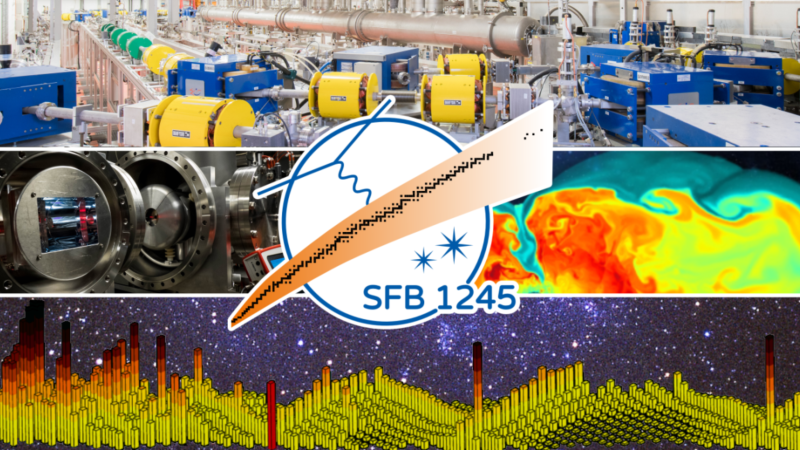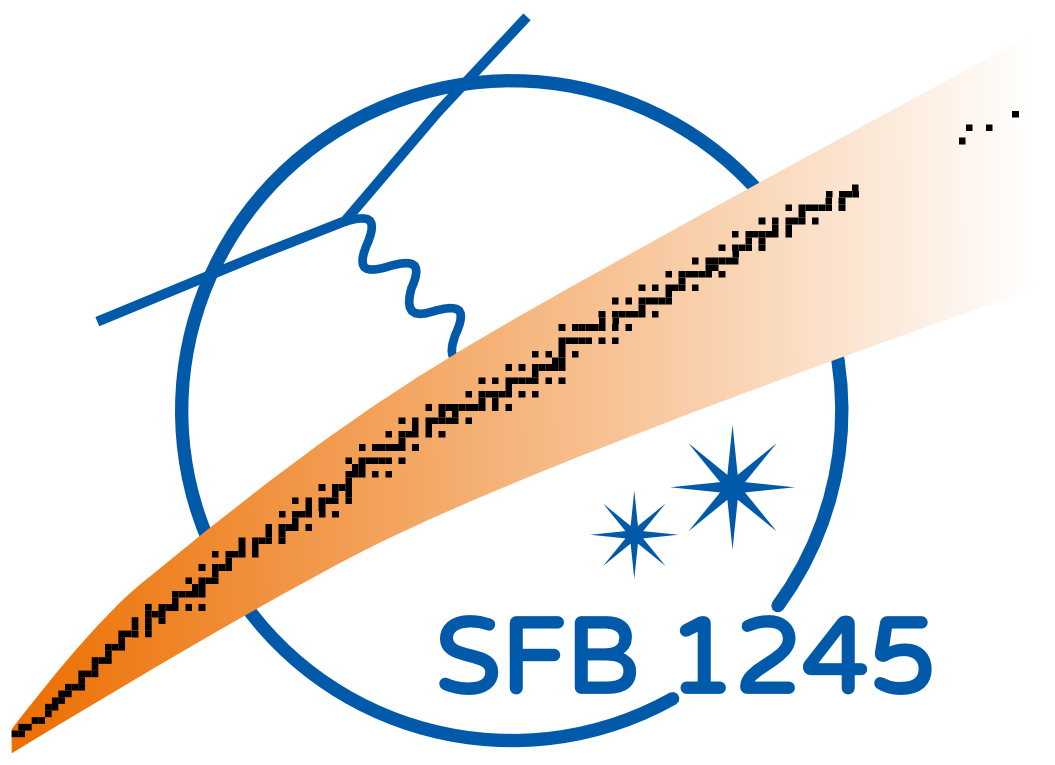- Research Project
Nuclei: From Fundamental Interactions to Structure and Stars
- Natural Sciences

The SFB 1245 explores the physics of “Nuclei: From Fundamental Interactions to Structure and Stars” in the unique environment at TU Darmstadt. The strong experiment-theory synergies in Darmstadt enable an exciting program across nuclear structure physics and nuclear astrophysics, with an impact also beyond these fields. The CRC is developing a systematic understanding of nuclei across the nuclear chart based on effective field theories (EFTs) of the strong interaction. Exploiting scale separation in nuclei, EFTs enables a consistent and systematic description of nuclear forces and electroweak interactions in nuclei and nuclear matter. This theoretical understanding is tested with key experiments at international facilities and at the S-DALINAC in Darmstadt. In nuclear astrophysics, the focus is on core-collapse supernovae and neutron star mergers, their nucleosynthesis fingerprints, and the associated kilonovae and gravitational wave signals.
The research program of the CRC addresses two strongly connected areas: (A) Strong interactions and precision nuclear structure and (B) Electroweak interactions and nuclear astrophysics. In area A, the researchers investigate key facets of nuclei across the nuclear landscape, advancing the limits of experimental and theoretical methods. This includes measurements of charge radii and electromagnetic transitions with high accuracy, exploring correlations in multi-neutron systems, and precision spectroscopy of neutron-rich nuclei. Novel many-body methods are being developed and applied with accurate chiral EFT interactions to understand how the properties of nuclei emerge from nuclear forces. This is complemented by EFTs in the universal regime of halo nuclei and few-neutron systems. In area B, calculations of the nuclear equation of state from low to high densities and finite temperature provide input to supernova and merger simulations. The equation of state will be constrained by direct measurements of the electric dipole polarizability of nuclei.
Another focus is the systematic investigation of magnetic dipole properties of nuclei including the contributions from two-body currents. The role of electroweak interactions and neutrinos in the dynamics of supernovae, neutron star mergers, and for nucleosynthesis is being explored. The program is also expanded to include the observations of the oldest stars to compare against the nucleosynthesis predictions. An Integrated Research Training Group will provide an enhanced, innovative, and international environment, and an outreach program has been devised that transfers the scientists' excitement for the CRC research to schools and the general public. TU Darmstadt is the strongest university center combining experimental and theoretical nuclear physics and nuclear astrophysics in Germany. Joining strengths in the CRC is taking the understanding of the chart of nuclei based on EFTs and the nuclear physics of multimessenger observations to a new level.




